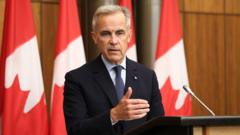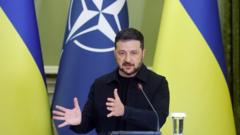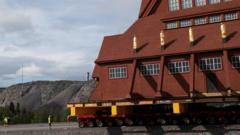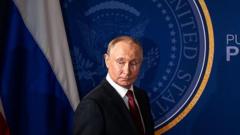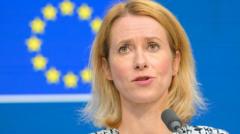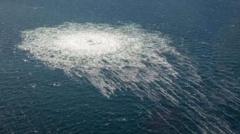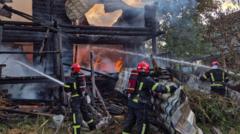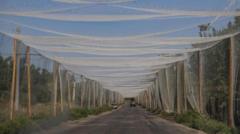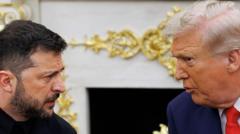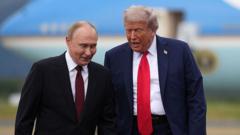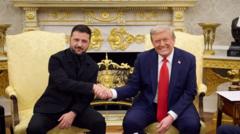Maps displayed in the Oval Office highlight the territorial complexities of the Ukraine war, affecting discussions on possible compromises between Ukraine and Russia.**
Strategic Cartography: The Impact of Maps on U.S.-Ukraine Relations**
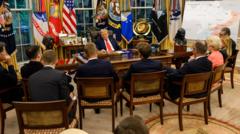
Strategic Cartography: The Impact of Maps on U.S.-Ukraine Relations**
The role of maps in shaping perceptions and strategies in the ongoing Ukraine conflict, especially during discussions between Trump and Zelensky.**
In the ongoing dynamics of the Ukraine conflict, a significant map displayed in the Oval Office has become a focal point in shaping President Donald Trump’s view on the war. The map, featuring areas of Ukraine occupied by Russian forces marked in red, was meant to underline the reality of the situation during Trump’s Monday meeting with Ukrainian President Volodymyr Zelensky. Trump commented on the map's depiction of the extensive territory taken by Russia, stating, "A big chunk of territory is taken and that territory has been taken."
This visual representation conveys a clear message from the White House to Ukraine, suggesting it might be time to contemplate territorial compromises, including potential land swaps with Russia. Zelensky, carrying his own map, later noted that he engaged in addressing discrepancies about control during their discussion, insisting that "who controls what" must be grounded in factual terms rather than hearsay.
Despite Zelensky's attempts to clarify the situation, Trump maintained his stance that Russia's military power remains significant. He highlighted that the Donbas region, currently approximately 79% under Russian control, is becoming a central point of discussion regarding potential compromises. Prior to the conflict, Donbas represented around 16% of Ukraine's economic output, making the stakes particularly high for Ukraine.
Zelensky countered some of the assertions made during the meeting by providing his own statistics regarding Russian control, indicating that in the past thousand days, Russia had occupied less than 1% of Ukraine's total territory. The ongoing conflict has indeed seen both Russian territorial gains and Ukrainian successes in reclaiming land, pointing to a fluctuating battlefield.
Analysis from defense experts underlines that while Russian advances in certain eastern areas have increased, broader control across the front lines remains largely static since the full-scale invasion began. Factors contributing to this stalemate include Ukraine's strategic defenses and Russia's recent recruitment efforts, which are reportedly enabling more systematic assaults.
As discussions between Trump and Zelensky continue, the use of maps serves not only as a tool for military analysis but also as a potent symbol of the overarching struggle between territorial integrity and foreign aggression. "Thank you for the map, by the way, it was great," Zelensky expressed to Trump, acknowledging both the differences in perspective and the urgent need for resolutions to reclaim lost territories. The future of Ukraine's sovereignty and territorial integrity hangs in the balance as leaders navigate complex diplomatic landscapes.


